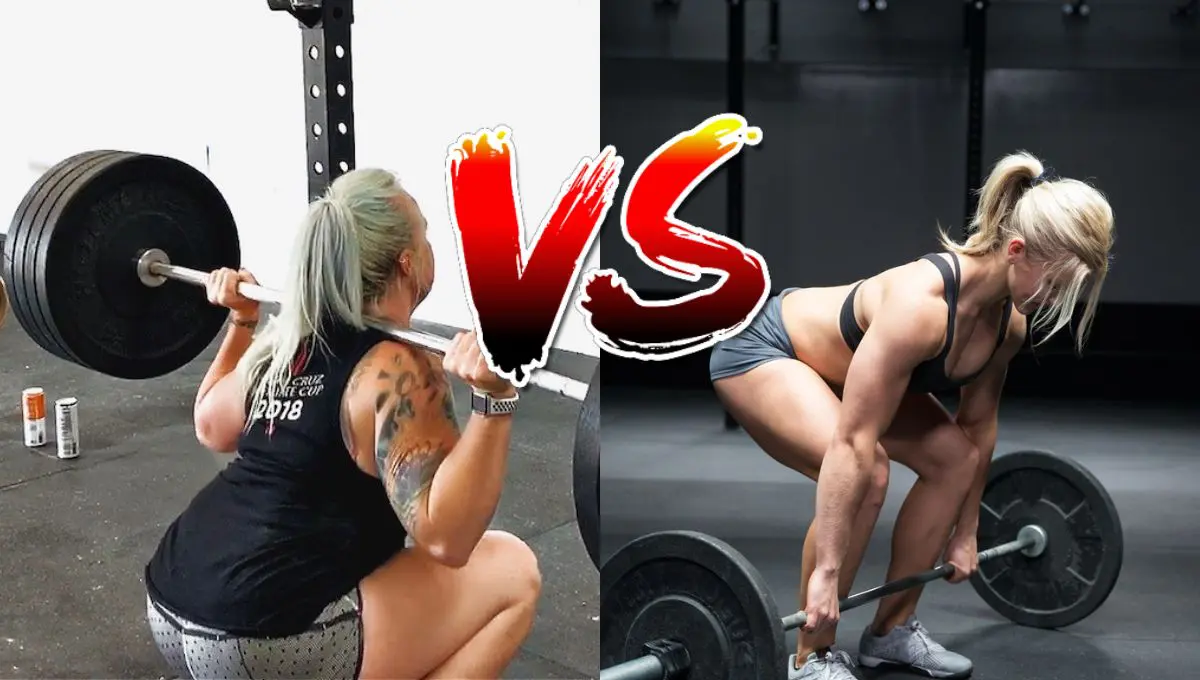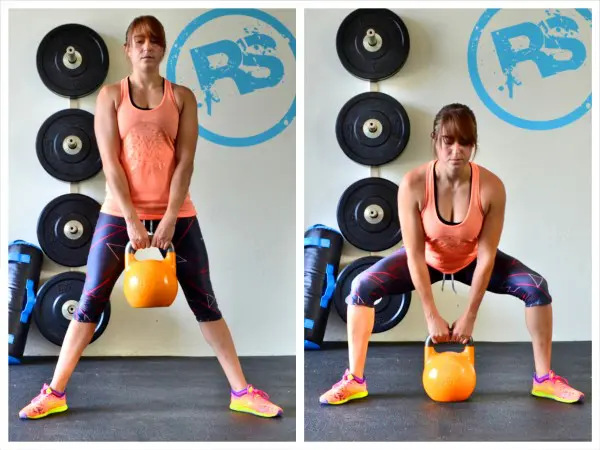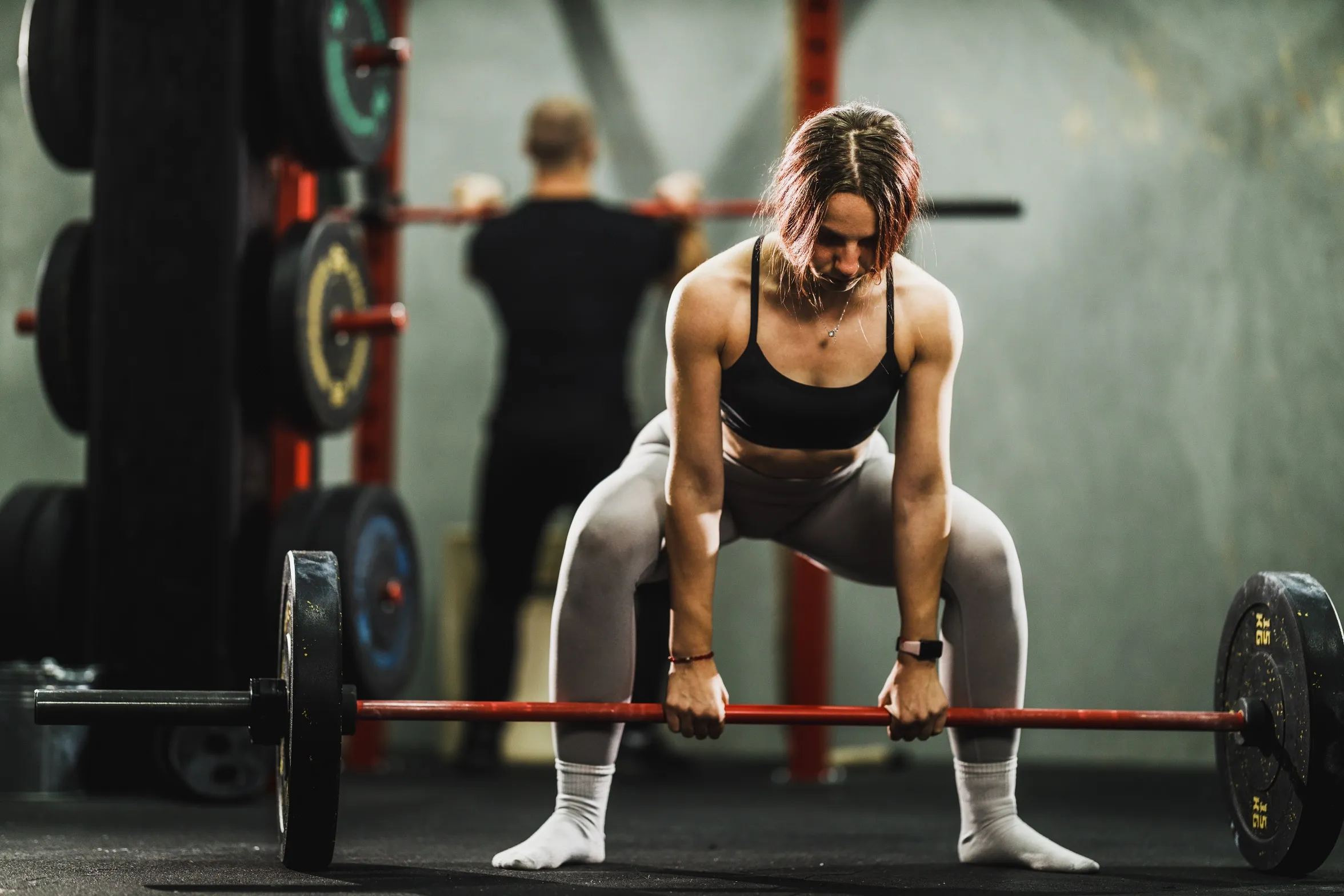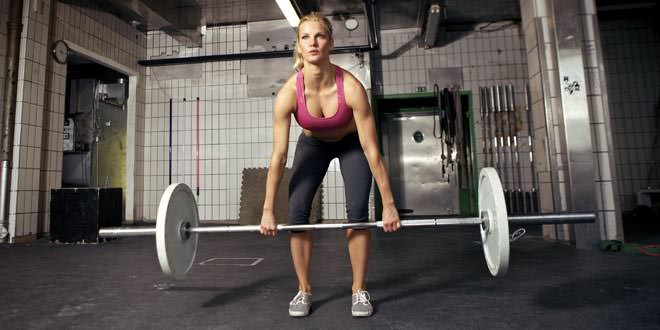Squats and deadlifts are like the superheroes of gym exercises. Both are super popular and really good at making you stronger and fitter, but they do it in different ways. Think of squats like a leg day champion, focusing on your thighs, butt, and even your belly muscles to keep you balanced. Deadlifts, on the other hand, are the heroes for your back, butt, and the backs of your legs. They’re about picking up weight from the ground. This article will take a simple look at how these two exercises compare, helping you understand why you might want to do both in your workouts.

Squat vs Deadlift: A Detailed Comparision:
Both squats and deadlifts are fantastic exercises for building strength and muscle, but they have their own unique benefits and differences. Choosing the right one for you depends on your specific goals and fitness level.
1. Muscle Engagement:
Squats: Quadriceps and Lower Body Focus
Squats primarily target the quadriceps, hamstrings, and glutes. The exercise involves a bending motion of the knees and hips, which engages the front and back of the thighs, as well as the glutes. Additionally, squats also work the calves, lower back, and core muscles to a lesser extent, providing a comprehensive lower body workout.
Deadlifts: Posterior Chain Activation
Deadlifts focus on the posterior chain, which includes the hamstrings, glutes, lower back, and upper back muscles. The movement requires lifting a weight off the ground by hinging at the hips, which engages the back of the body more intensely than squats. This makes deadlifts particularly effective for developing back strength and muscle mass.
2. Movement Pattern:
Squats: Vertical Movement
Squats are characterized by a vertical movement pattern, where the body moves up and down. This vertical loading of the spine and legs helps in developing lower body strength, improving joint flexibility, and enhancing core stability, which is essential for maintaining balance and posture during the lift.
Deadlifts: Horizontal Movement
In contrast, deadlifts involve a horizontal movement pattern. The exercise starts with the weight on the ground, requiring the lifter to hinge at the hips and use a pulling motion to lift the weight. This horizontal pull not only strengthens the posterior chain but also emphasizes hip and lower back strength, which is crucial for a variety of athletic movements and daily activities.
3. Risk and Technique:
Squats: Technique for Knee and Hip Safety
While squats are generally safe when performed correctly, improper technique can lead to knee or hip injuries. Ensuring proper knee alignment, depth, and posture during the squat is crucial for minimizing risk and maximizing the effectiveness of the exercise.

Deadlifts: Lower Back Considerations
Deadlifts carry a higher risk for lower back injury if performed with improper form. The initial lift from the ground requires precise technique to avoid straining the lower back. Maintaining a neutral spine, engaging the core, and using the legs and hips to lift can help mitigate this risk.
4. Core Engagement:
Squats: Integrated Core Stability
Squats demand significant core engagement to stabilize the body throughout the movement. The core muscles, including the abdominals and lower back, must work actively to maintain posture and balance, especially when the squat is performed with added weight. This integrated approach to core stability not only strengthens the lower body but also builds a strong foundation that benefits overall athletic performance and daily movements.
Deadlifts: Dynamic Core Strength
Deadlifts require dynamic core strength, particularly in the lower back, to safely lift and lower the weight. The action of bending and straightening at the hips places a high demand on the erector spinae muscles, which run along the spine. The need to maintain a neutral spine under load during a deadlift directly contributes to building a powerful and resilient core, essential for lifting, pulling, and many forms of athletic activity.
5. Versatility and Variations:
Squats: Wide Range of Variations
Squats come in various forms, including back squats, front squats, overhead squats, and goblet squats, among others. Each variation shifts the focus slightly between the quadriceps, hamstrings, glutes, and core, offering a wide range of options to target different aspects of the lower body and core strength. This versatility makes squats adaptable to many training goals and suitable for different levels of fitness and mobility.

Deadlifts: Specific Posterior Focus
While deadlifts also offer variations, such as the sumo deadlift, Romanian deadlift, and trap bar deadlift, they generally maintain a specific focus on the posterior chain. Each variation adjusts the stance, grip, or equipment used, subtly changing the muscle emphasis or reducing strain on the lower back. However, the primary goal remains to strengthen the back, hamstrings, and glutes.
6. Equipment Requirements:
Squats: Necessity for Racks and Bars
Performing squats, especially back squats or front squats with heavier weights, typically requires a squat rack or power cage. This equipment ensures safety during the exercise, allowing the lifter to properly position the barbell and safely rerack the weight after completing the set. The need for specific equipment can sometimes limit accessibility for those without a well-equipped gym.
Deadlifts: Minimal Equipment Needs
Deadlifts can be performed with just a barbell and weights, making them accessible to a wider range of environments, including home gyms. While specialized bars and platforms can enhance the experience, they are not strictly necessary, allowing more flexibility in training settings.
7. Role in Athletic Performance:
Squats: Foundation for Explosive Power
Squats are fundamental in developing explosive power, critical for jumping, sprinting, and quick changes of direction. The vertical force production in squats directly translates to improved performance in a wide range of sports, from basketball to soccer, by enhancing lower body power and agility.

Deadlifts: Enhancing Strength for Lifting and Pulling
Deadlifts are unparalleled in their ability to increase raw lifting strength, particularly beneficial in sports and activities that require powerful ground force generation or pulling strength, such as rowing, rugby, and weightlifting. The emphasis on the posterior chain is crucial for developing the kind of strength that is transferable to real-world lifting tasks and athletic endeavors.
Frequently Asked Questions
Are deadlifts or squats better?
Both deadlifts and squats offer unique benefits. Deadlifts primarily target the back of your legs, while squats focus more on the quads. The choice between the two depends on your specific goals. If you want to improve quad strength, squats are a better choice. If you want to target the back of your legs, deadlifts are more effective.
Is squatting better than deadlift for vertical jump?
Research shows no significant difference in maximum vertical jump height between the back squat and trap bar deadlift groups. So, neither squatting nor deadlifts have a clear advantage over the other when it comes to improving vertical jump.
Do deadlifts make hips wider?
Contrary to popular belief, deadlifts do not widen the hips or waist. Deadlifts are a compound movement that engages several muscle groups, including the hips and core. They can actually help improve overall body composition by promoting fat loss and increasing muscle strength.
Is the deadlift the king of the exercises?
The deadlift is often referred to as the king of exercises due to its ability to target multiple muscle groups simultaneously. It engages the entire body, from the legs and back to the core and arms. Deadlifts are an effective compound exercise that can build overall strength and muscle mass.

Hello, I’m Ravindra. Over the years, I’ve immersed myself deeply into the world of fitness and health, transforming both my body and mind. Writing has allowed me to share my journey, insights, and expertise with those just starting out and seasoned fitness enthusiasts alike. Beyond just routines and diets, I believe in inspiring others to adopt a holistic approach to well-being.
